Complete Solutions to Solved Examples of chapter CHEMICAL BONDING AND MOLECULAR STRUCTURE of Class 11 book with complete answers and questions
| Class 11 | CHEMISTRY |
| Chapter | CHEMICAL BONDING AND MOLECULAR STRUCTURE |
| CENGAGE CHEMISTRY | Solved Examples |
| Number Of Questions | 36 |
| Academic Year | 2023-24 |
Construct a table comparing metals with non-metals in terms of
(a) The sign of the charges possible on monoatomic ions
(b) The possibility of reaction with other elements of the same class
(c ) The range of the possible number of valence electrons
(d) The ability of the elecments to conduct electricity in the elementary state .03:13View SolutionIn which of the following compounds is the bonding essentially ionic in which is the bonding essentially covalent, and in which are both types of bonding represented ?
(i) `C_(2)H_(5)OH` (ii) `NaBr` (iii) `Ba(CN)_(2)` (iv) `(NH_(4))_(2)S` (v) `PCI_(3)`
(b) Write the formula for a compound of `CI` which contains (i) Ionic bonds only (ii) Ionic and covalent bonds and (iii) Covalent bonds only
(c ) Covalent bonds are called directional while ionic bonds are called non-directional Explain .03:07View SolutionPure liquid `H_(2)SO_(4)` solidifies below `10.4^(@)C` Neither the pure liquid nor the solid conducts electricity however, aqueous solution of `H_(2)SO_(4)` conducts electricity
Solid `Na_(2)SO_(4)` which melts at `884^(@)C` does not conduct electricity, but molten `Na_(2)SO_(4)` as well as aqueous solutions of `Na_(2)SO_(4)` conduct electricity Explain the difference in properties between pure `Na_(2)SO_(4)` and `H_(2)SO_(4)` .02:44View SolutionWrite electron dot and line structure for
(a) `SeO_(3)^(2-)` ,(b) `Li_(3)PO_(4)` ( c ) `CIO_(2)^(Θ)` (d) `COCI_(2)`
(e) `H_(2)CO`
(f) `C_(2)H_(2)` (g) `HCO_(2)H` .19:15View SolutionBy completing the following structures, adding unshared `e^(-)` pairs when necessary calculate the charges
(a) `N -= C - -=N`
`CI - C-=N`
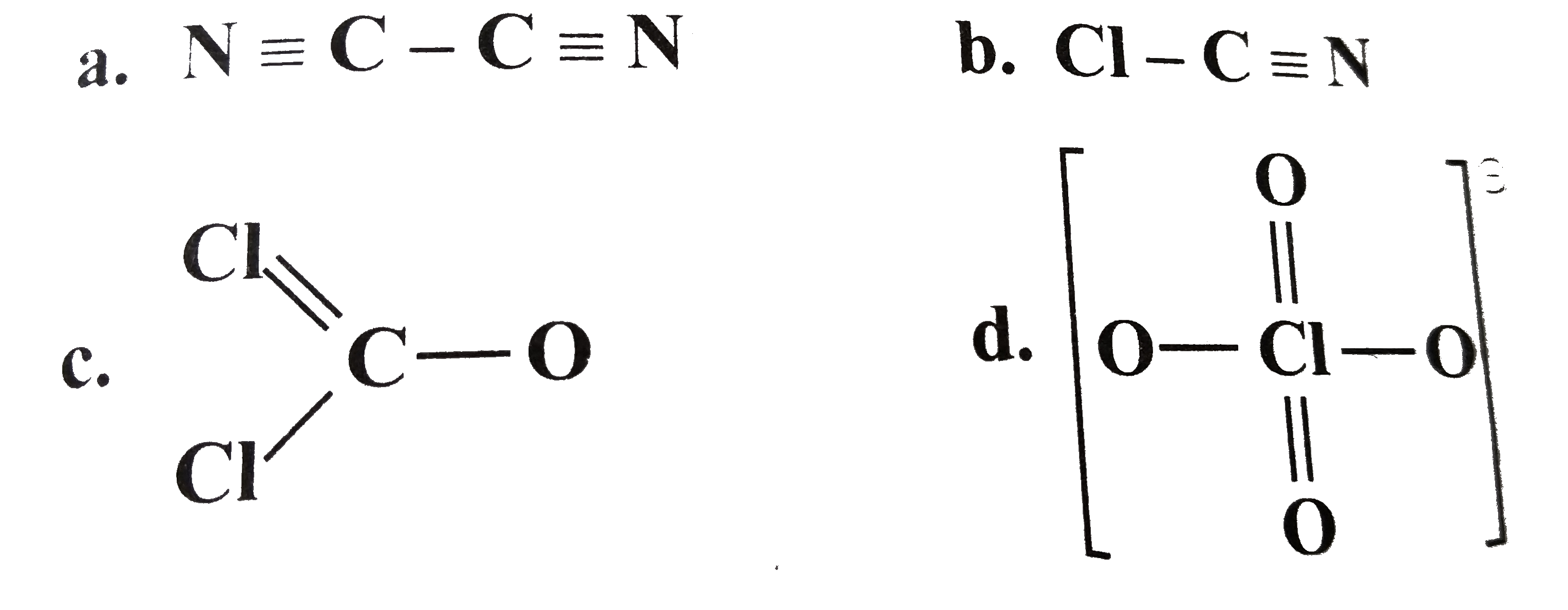
`[O-underset(O)underset(||)overset(O)overset(||)(CI)-O]^(Theta`
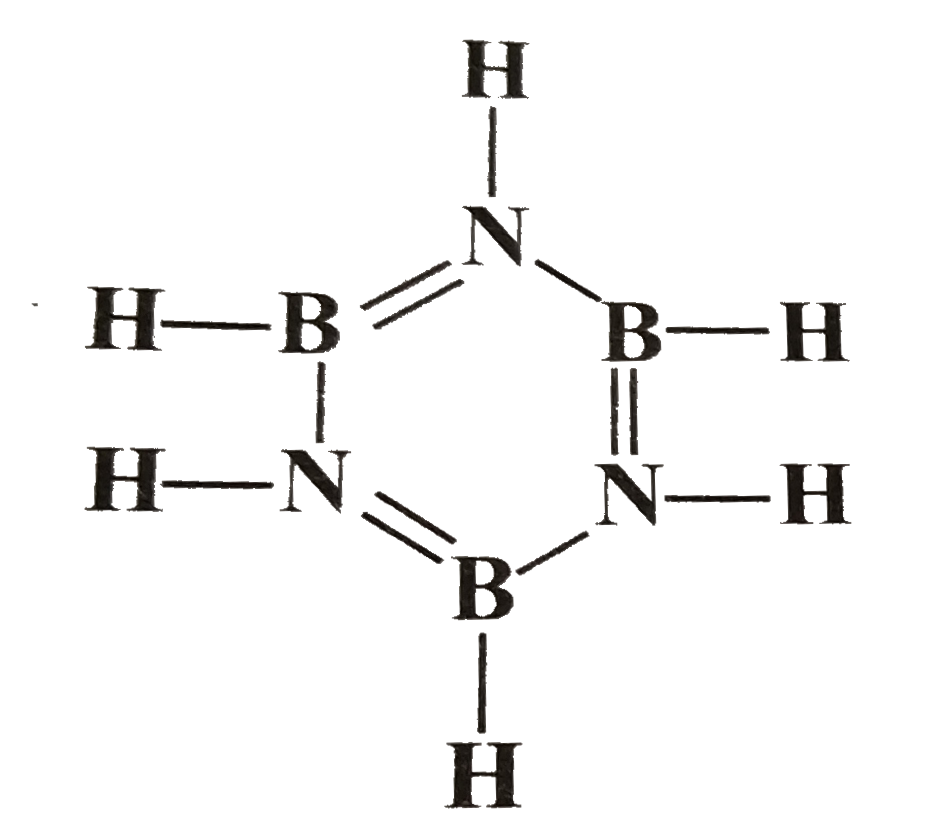 .11:44View Solution
.11:44View SolutionIn each of the following paris select the species having the greater resonance stabilisation
`H_(2)O =Oand underset(O^(Theta))underset(|)HC=O`
(ii) `HNO_(3)` and `NO_(3)^(Theta)`
(b) Draw all possible octet structural formulas for `N_(3)^(Theta)` Which ones are possible resonance forms ? .05:32View SolutionDistinguish between a polar bond and a polar molecule To which does the term dipole refer?
(b) Which is having the higher b.pt: `Br_(2)` or `ICI`
(c ) Can a molecule have a dipole moment if it has no polar covalent bonds
(ii) How is it possible for a molecule to have polar bonds but no dipole moment?
(d) Arrange in decreasing polarity of bonds `SbH_(3),AsH_(3),PH_(3),NH_(3)` , .07:03View SolutionThe decreasing order of dipole moment of `SO_(2) gt NH_(3) gt AsH_(3) gt BF_(3) gt CO_(2)(mu =0)` What can be concluded about the shapes of the molecules ?
(b) What is the value of `ID` in `SI` unic
(c ) The dipole moment of `HBr` is `2.60 xx 10^(30)Cm` and the interatomic spacing is `1.41 A` What is the percentage of ionic character of `HBr` ? .04:33View SolutionThe single and multiple bond radii of some elements given in the following table Calculate the bond lengths in
(a) `SCI_(2)`
(b) `NH_(3)`
(c ) `CH_(2)CI_(2)`
(d) `HOCI`
(e) `HCN`
(f )`H_(3)PO_(4)`
(g) `CH_(3)NH_(2)`
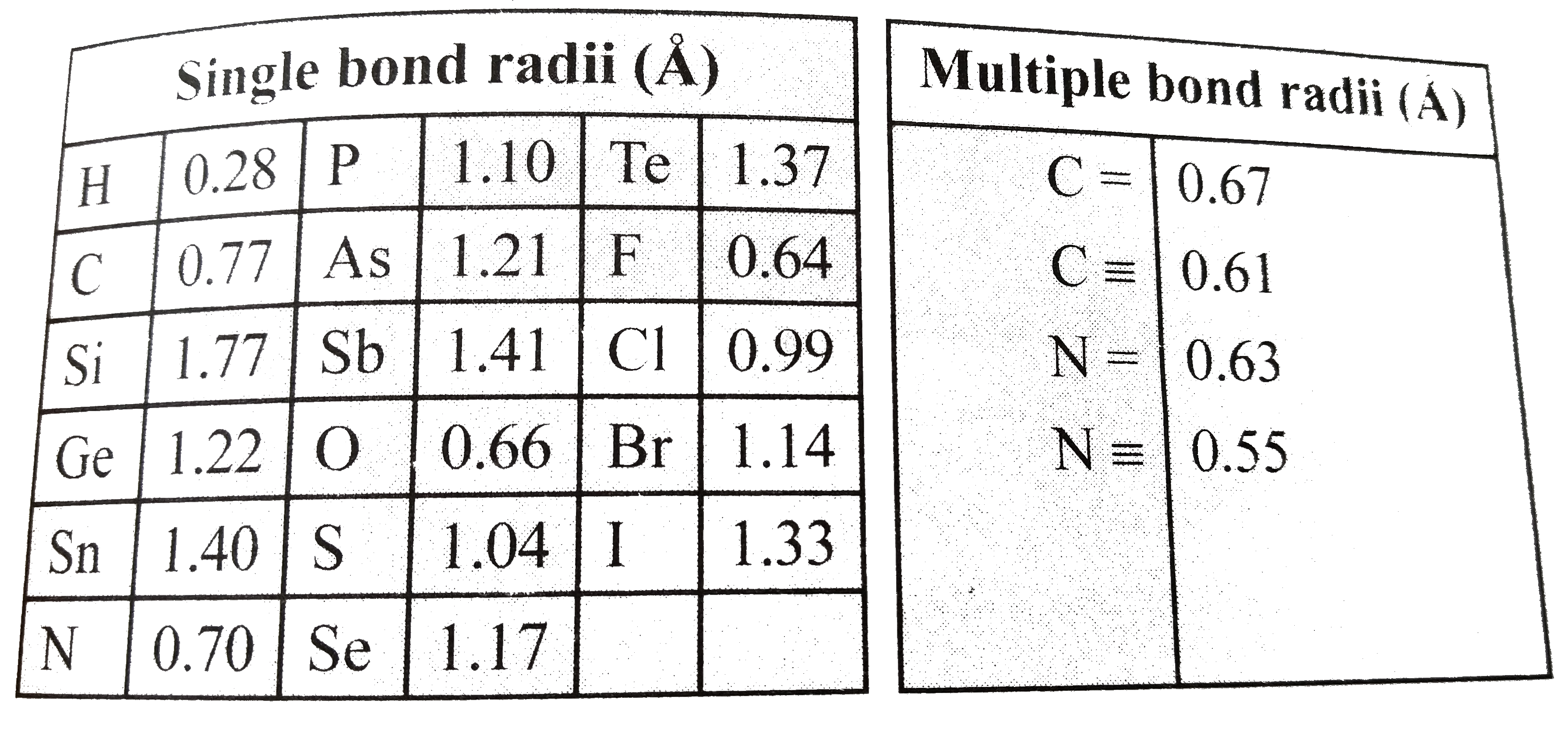 .07:10View Solution
.07:10View SolutionArrange `C-C,C=C` and `C-=C` in order of
(i) Decreasing bond energey
(ii) Decreasing bond lengths
(b) The `As-CI` bond distance in `As CI_(3)` is `2.20 A` Estimate the single- bond covalent radius of As .02:20View SolutionThe `Pt-CI` distance is `2.32 A` in several crystaline compounds
What is the `CI-CI` distance in structure (i) and in structure (ii)
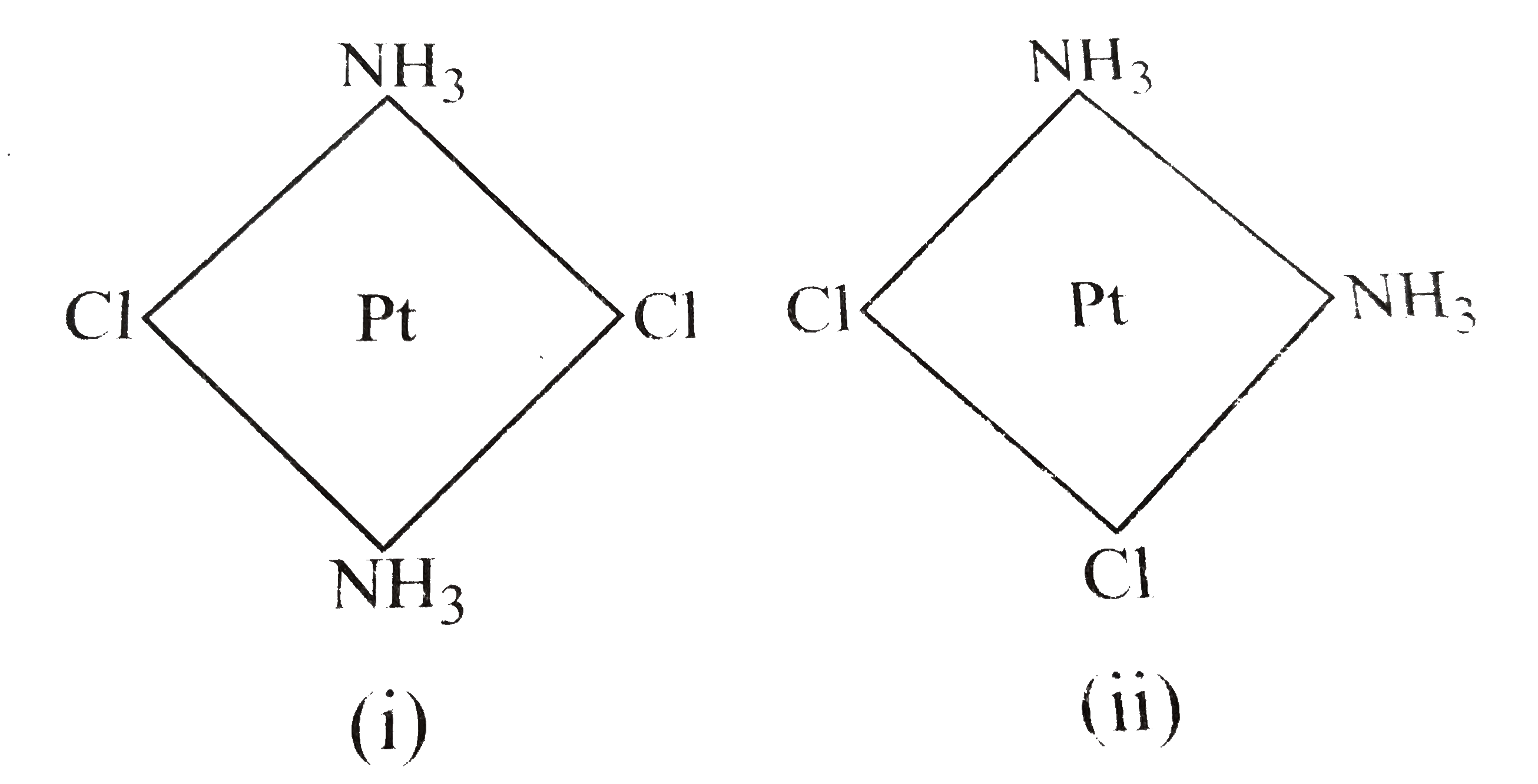 .01:27View Solution
.01:27View SolutionThe averge `(C _C)` bond energy is `343 kJ mo1^(-1)`. What do you predict for the Si -Si single bond energy
(b) Carbrundum `(SiC)` and corundun `(A1_(2)O_(3))` are important abrasives Comment on the structures for these compounds to explain why they have such hardness .01:47View SolutionCompare the shapes of p-orbital and sp-hybrid orbital Which on has a greater directional orientation ?
(b) What are the hybridisation state of each C-atom in the following molecules ?
(i) Benzene (ii) `CH_(3) CH_(2) CH_(2) CH_(3)`
(iii) `HC -= CH`
(iv) `CH_(2) =CH- CH= CH_(2)`
(v) `CH_(3) - CH =CH - CH_(3)`
(c ) What hybidisation is expected on the central atom of each of the following molecules ?
(d) (i) Which molecule `AX_(3),AX_(4),AX_(5),AX_(6)` is likely to have to a trigonal bipyramid structure
(ii) If the central atom A has no lone pairs, what type of hybridisation will it have .04:33View SolutionComplete the following table
(b) Which of the sets of hybridised orbitals `sp sp^(2),sp^(3),dsp^(3),d^(2),sp^(3),sp^(3)d^(2)` do (does) not maximise the angles between electron pairs ?
(c ) Fluorine molecule is formed by the overlap of __
(d) Predict the shapes of the following species and desribe the type of hybrid orbitals on the central atom
(i) `PbCI_(4)`, (ii) `N_(2)CI_(4)` ,(iii) `PCI_(3)` ,(iv) `BH_(4)^(Θ), (v) SbF_(6)^(Θ)`
(e) How many `sigma` and `pi` bonds are present in a benzene molecule ? .
 07:03View Solution
07:03View SolutionWhat is the number of molecular orbitals obtained by mixing of two atomic orbitals ?
(b) Out of `F_(2)` and `OF` which of these molecules is (are) paramagnetic
(ii) Which should be more stable towards dissociation into atoms `OF` or `F_(2)`
(c ) Explain why `NO^(o+)` is more stable towards dissociation into atoms than `NO` whereas `CO^(o+)` is less stable than `CO`
(d) Predict whether `He_(2)^(o+)` ion in its electronic ground state is stable towards dissociation into he and `He^(o+)` .08:16View SolutionCompare and contrast the concepts of hybrid orbitals and molecular orbitals with respect to
(i) The number of atoms involved
(ii) The number of orbitals produced from a given number of ground state orbitals
(iii) The energies of the resulting orbitals with respect to one another
(b) Distinguish between non-bonding and antibonding orbitals
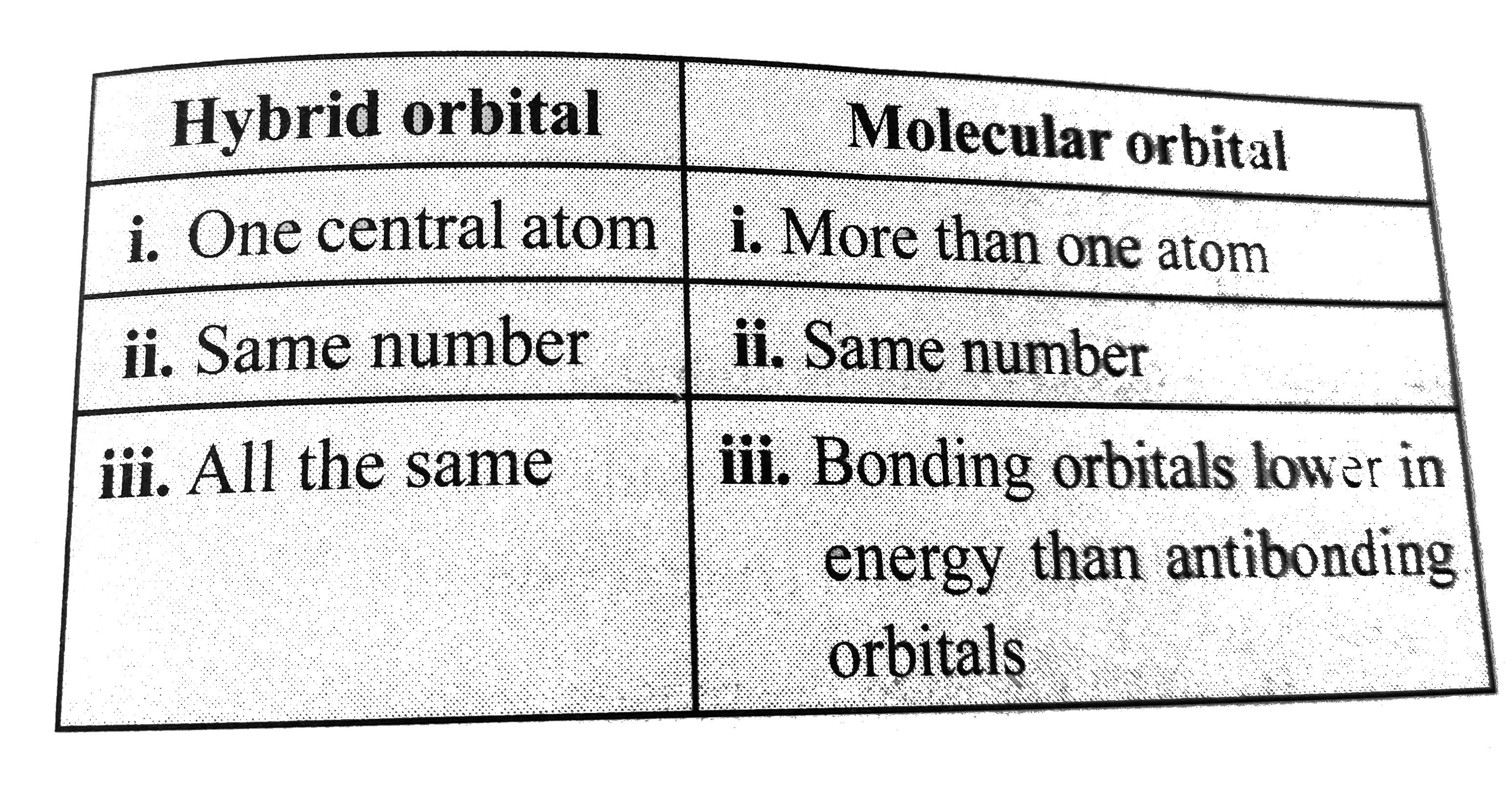 .05:21View Solution
.05:21View SolutionState the bond order and indicate whether the species is paramagnetic
(i) `B_(2)` (ii) `C_(2)` (iii) `N_(2)`
(iv) `O_(2)` (v) `Br_(2)` (vi) `CI_(2)^(o+)`
Which of the following molecules has the highest bond order
(i) `Ne_(2)` (ii) `F_(2)`
(c) Explain why `N_(2)` has a greater dissociation energy than `N_(2)^(o+)`, whereas `O_(2)` has a lower dissociation energy tnan `O_(2)^(o+)`
(b) The bonding `sigma` 2s orbital has a higher energy than the antibonding `sigma^(**)` 1s orbitals Why is the former a bonding orbital while the latter is an antibonding .12:11View SolutionWhich properties of element depend on the electronic configuration of atoms and which do not
(b) Why the chemical properties of a group are similar Why do they not have identical properties
(c ) Account for the great chemical similarity of the lanthanoid elements (Z =57 to 71)
(d) Select the largest species in each group
(i) `Ti^(2),Ti^(+3)` (ii) `F^(Θ),Ne,Na^(o+)`
(e) Select the species with the largest `IE` in each group
(i )`na,K,Rb` (ii) F,Ne,Na
(f) Which ion has the smallest radius `Li^(o+),Na^(o+),K^(o+) Be^(+2), Mg^(+2)`
(g) Select among the element that has the lowest and highest IE `K, Ca, Se, B, Kr`,
(h) The ionic radii of `S^(2-)` and `Te^(2-)` are and 220 pm respectively Predict the ionic radius of `Se^(2-)` and for `p^(3-)`
(i) In the ionic compound `KF` the `K^(o+)` and `F^(o+)` have practically identical radii, about 134 pm each. Predict the relative atomic radii of 1`K` and `F` .07:59View SolutionSelect from each of the following gropus, the one which has the largest radius
(i) `Co,Co^(2+),Co^(3+)` (ii) `S^(2-), Ar, K^(o+)` (iii) `Li,Na,Rb`
(iv) `C,N,O` (v) Ne,Na,Mg (vi) `La,Lu`
(vii) `Cu, Ag, Au` (viii) `Ba, H_(r)`
(ix) `Mg, na Na^(o+) , Mg^(+2) ,Al`
(b) `IE_(1)` of `C` is `11.2 eV` What would be the value of `iE_(1)` of Si to be greater or less than this amount ?
(c) `IE_(1)` of `Li` and `K` are `5.4` and `4.3 eV` respectively What would be the value of `IE_(1)` of `P` ?
(d) `IE_(1)` of Na? .
(e) The `IE'` s of Li, Be and `C` are `5.4, 9.3` and `11.3 eV` What would be the value of `IE` s of `B` and `N` ?
(f) Which of these elements have the lowest `IE_(1)` Sr, As, Xe, S,F ?
(g) Select from each of the following group the element which has the largest `IE`
(i) `Na,P,CI` (ii) `He,Ne,Ar` (iii) `O,F,Na`
(h) Arrange the species in each group in order of decreasing `IE'` s and in each case explain the reason for the sequence
(i) `K,Rb,Cs`
(ii) `Be,B,C` (iii) `Cu,Ag,Au` ?
(iv) `C,N,O` (v) `N,O,F` (vi) `K, Ca, Sc`
(vii) `Na,Mg,AI` (viii) `Fe,Fe^(+2),Fe^(+3)` (ix) `K^(o+),Ar,CI^(Θ)`
(i) Explain why `IE_(1)` of `Cu` is higher than that of `K` whereas `IE_(2)` are in reverse order
(j) Account for the difference in `IE`
(i) between `K^(o+)` and `Ca^(o+)`
(ii) between `Cu^(o+)` and `Zn^(o+)`
(k) Ionisation potential is an old term for ionisation energy. Explain why yhe two are synonymous ? .View SolutionGive the decreasing order of the property mentioned against each of the following
`C_(2)H_(2),BF_(3),H_(2)O,NH_(3),CH_(4)` (bond angle)
(b) `NH_(3),overset(Θ)(NH_(2)),overset(o+)(NH_(4))` (bond angle)
( c) `K-F, Li-CI, Na-I, Br-H, F-H, C-H` (ionic character)
(d) `NH_(3),PH_(3)` (bond angle)
(e) `NF_(3),NH_(3)` (dipole mement)
(f) `CH_(3) CI,CH_(2) CI_(2), CHCI_(3) , C CI_(4)` (dipole moment)
(g) `MgO,CaO` (hardness)
(h) `HCI,HBr` (ionic characacter)
(i) `NO_(2), NO_(2)^(o+) NO_(2)^(Θ)` (bond angle)
(j) `CI_(2),O_(2),F_(2),N_(2)` (bond strenght)
(k) `O,N,F,CI,S` (strength of H - bonging)
(I) `N_(2),N_(2)^(o+),N_(2)^(Θ) , N_(2)^(2-)` (order of stability)
(m) `O_(2)^(2+),O_(2),O_(2)^(o+) , O_(2)^(Θ) O_(2)^(2-)` (order of stability)
(n) `N_(2),F_(2),O_(2),H_(2)` (bond lenght) .13:52View SolutionAnswer the following
(a) How many `sigma, pi` non - bonding electrons present in
(i) `P_(4)O_(6)` (ii) `P_(4)O_(10)`
(b) Which of the following are isostructural and isocelectonic ?
`NO_(3), CO_(3)^(2-),CIO_(3)^(Θ), SO_(3)`
(c ) Why `CO_(2)` and `SO_(2)` are not isostructural ?
(d) Why `PCI_(5)` dissociate to give `PCI_(3)` and `CI_(4)` whereas `SF_(6)` does not dissociate to give `SF_(4)` and `F_(2)` on heating ?
(e) Discuss the shapes of molecular orbitals formed by the combination of the following atomic orbitals
(i) `2p_(z)` and `2p_(z)` (ii) `2p_(x)` and `2p_(x)`
(f) Why `IF_(7)` dissociate to give `IF_(2) + (5)/(2)F_(2)` not `IF_(2) + F_(2)` Expalin
(g) Why axial bonds of `PCI_(5)` are longer than equatorial bonds ?
(h) `BH_(4)^(Θ)` and `overset(o+)NH_(4)` are isolobal Explain
(i) Name the anion which is isostructural with `BF_(3)` (j) Name the cation which is isostructural with `CH_(4)`
(k) Which of the following alkali metal chlorides is expected th have the highest melting point
(i) `LiCI` (ii) `KCI` (iii) `RbCI` (iv) `NaCI` .View SolutionExplain
(a )Which d-orbital in involved in
(i) `sp^(3)`d hybridisation (ii) `sp^(3) d^(2)` hybridisation
(iii) `dsp^(2)` hybridisation (iv) `sp^(3)d^(3)` hybridisation
(b) Why `H_(2)O` is liquid while `H_(2)S` is gas
(c ) Why `KHF_(2)` exists but `KHCI_(2)` does not
(d) Benzene ring contains alternate single and double bonds yet all the `C-C` bonds are of equal lenght why
(e) Out of `P-F,CI-F,S-F` and `F-F` bonds, which bond is the least ionic? .07:52View SolutionHow do you account for the difference in melting points between (a) and (b) between (c ) and (d) and between these two differences ?
 .03:00View Solution
.03:00View SolutionA plant virus was found to consist of uniform cylindrical particles `100A` in diameter and `4000 A` long The virus has a specific volume `0.314 cm^(3) g^(-1)` If the virus particle is considered to be one molecule, what is its molecular weight ? .
04:39View SolutionCalculate the I-I distance in each of the isomeric compounds `C_(2)H_(2)I_(2)` as shown below
Give Bond length of `C -I implies 210` pm
Bond length of `C =C implies 133` pm
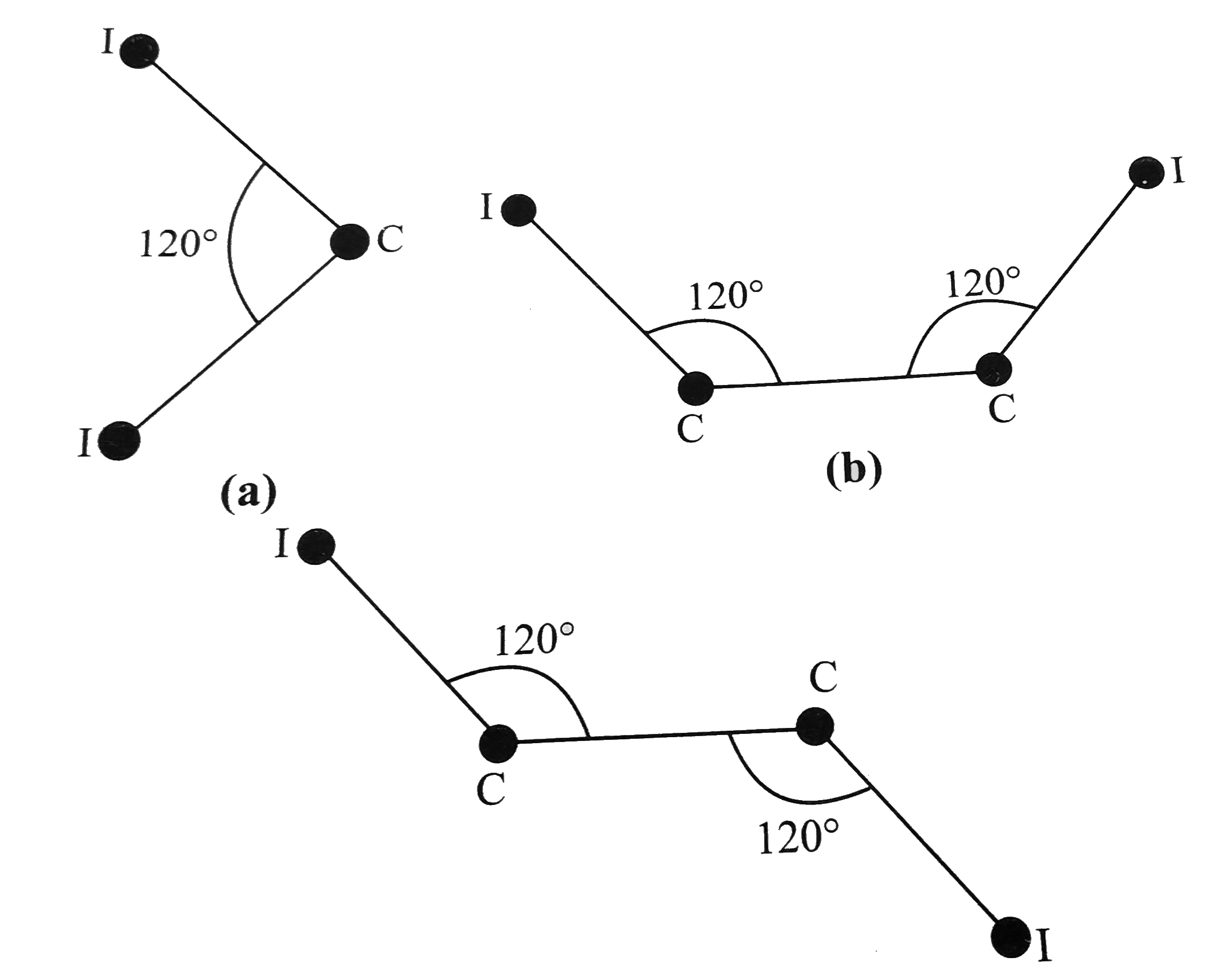

 .08:45View Solution
.08:45View SolutionCalculate the I-I distance in each of the three isomeric diiodobenzenes Assume that the ring is a regular hexagon and that each `C-I` bonds lies on a line through the centre of the hexagon .
Given `C -I` bond length ` =210` pm
The distance between two adjacent C-atom (i.e C-C)
`=140` pm
 .06:07View Solution
.06:07View SolutionEnthalpic of hydrogenation of ethene `(C_(2)H_(4))` and benzene `(C_(6)H_(6))` are -136.68 and `205.65 kJ mo1^(-1)` respectively
Calculate the resonance energy of benzene
(a) `C_(2) H_(4(g)) + H_(2(g)) rarrC_(2) H_(6), DeltaH_(1) = - 136.68 "kJ mo1"^(-1)`
(b) `C_(6)H_(6_((1))) + 3H_(2(g)) rarr C_(6) H_(12),DeltaH_(2) = - 205.65 "kJ mo1"^(-1)` .02:43View SolutionSelect the species which is best described to the right
(a) `CI_(2),Br_(2),I_(2)` (has the lowest boiing point)
(b) `CI,Ar,K` (has the smallest `IE`)
(c ) `CH_(4), NH_(3),HF` (has the highest boiling point)
(d) `CO_(2),NH_(3),CO` (has zero dipole moment)
(e) `HOI,HOBr,HOCI` (is the weakest acid) .03:17View SolutionThe `CI-O` bond distance in `CIO_(4)^(Θ)` is 144pm What do you conclude about the structure of this ion ?
(b) The `POCI_(3)` molecule has the shape of an irregular tetrahedron with the `P` atom located centrally The `CI-P-CI` angle is found to be `1035^(@)` Give a qualitative explanation for the deviation of this structure from a regular tetrahedron .02:30View SolutionDraw all geometrical isomers of `PBr_(2)CI_(3)` molecule State which isomer (s) have no dipole moment .
02:11View SolutionWrite electron dot structures and describe the geometry of the following molecules
(a) `NH_(2)OH` (Hydroxylamine)
(b) `NH_(2)NH_(2)` (Hybrazine)
(c ) `CH_(3)COCI` (Acety1 chloride)
(d) `CH_(2)=NH`( methylenamine) .02:53View SolutionReduce the hybridisation, geometry and shape of the following
(i) `CH_(2)^(2+)` (ii) `Br_(3)^(Θ)` (iii) `CIO_(3)^(o+)`
(iv) `F_(2)SeO` (v) `IO_(2)F_(2)^(Θ)`
Either of the hybridisation (i) `sp^(2)` and (ii) `sp^(3)d^(2)` of a central atom can lead to a squar planar molecule Give one example of each .07:02View SolutionState the bond order and indicate whether the species is paramagnetic
`CN^(o+)` (b) `CN` (c ) `CN^(Θ)` (d) No .02:19View SolutionIf the internuclear axis in the diatomic molecule `AB` is designated as the z-axis what are the varoius pairs of s,p or d atomic orbitals that can be combined to from (a) `pi_(x)` and (b) `pi_(y)` orbitals ? .
03:18View SolutionMake a table giving (i) number of orbitals with a given energy (ii) maximum number of electrons per orbital and (iii) maximum number of electrons per orbital and (iii) maximum number of electrons at a given energu for the following types of orbitals
(a) s
(b) p (c ) `sp^(2)` (d) `sp^(3)`
(e) `sigma` (f) `sigma^(**)` (g) `pi^(**)` .02:46View SolutionWhen 2s orbital overlaps with `2p_(x)` or `2p_(y)` orbital (assuming Z -axis as the internuclear axis) threr is a partical overlap and they do not form any `MO` Explain why ? .
02:10View Solution
Solved Examples questions and complete solutions for chapter CHEMICAL BONDING AND MOLECULAR STRUCTURE of CENGAGE CHEMISTRY (HINGLISH) of Class 11
All Exercises from CENGAGE CHEMISTRY Class 11 CHEMISTRY CHEMICAL BONDING AND MOLECULAR STRUCTURE
- Archives Fill In The Blanks
- Archives Integer
- Archives Multiple Correct
- Archives Single Correct
- Archives Subjective
- Archives True/False
- Ex 2 .2 Objective
- Ex 2 .2 Subjective (Intermolecular Forces And H-Bonding)
- Ex 2 .2 Subjective (Molecular Orbital Theory)
- Exercises Assetion Reasoning
- Exercises Fill In The Blanks
- Exercises Integer
- Exercises Linked Comprehension
- Exercises Multiple Correct (Dipole Moment)
- Exercises Multiple Correct (Miscellaneous)
- Exercises Multiple Correct(Bond Angle )
- Exercises Multiple Correct(Chemical Bonding )
- Exercises Multiple Correct(Hybridisation)
- Exercises Multiple Correct(Hydrogen Bonding)
- Exercises Multiple Correct(Molecular Orbitaltheory (Mot))
- Exercises Single Correct (Bond Angle)
- Exercises Single Correct (Chemical Bonding)
- Exercises Single Correct (Dipole Moment)
- Exercises Single Correct (Hybridisation)
- Exercises Single Correct (Miscellaneous)
- Exercises Single Correct (Molecular Orbital Theory (Mot))
- Exercises Single Correct (Resonance And Formal Charges)
- Exercises True/False
- Illustration
- Solved Examples
